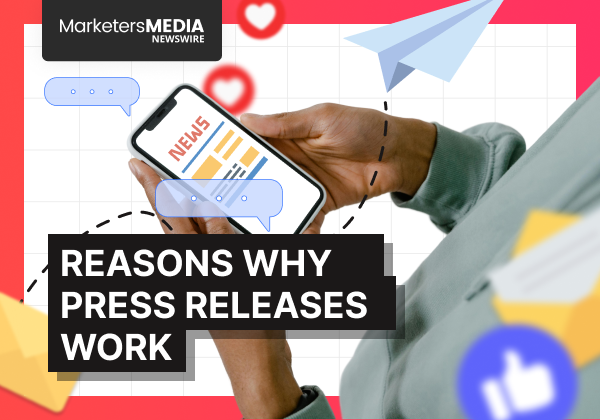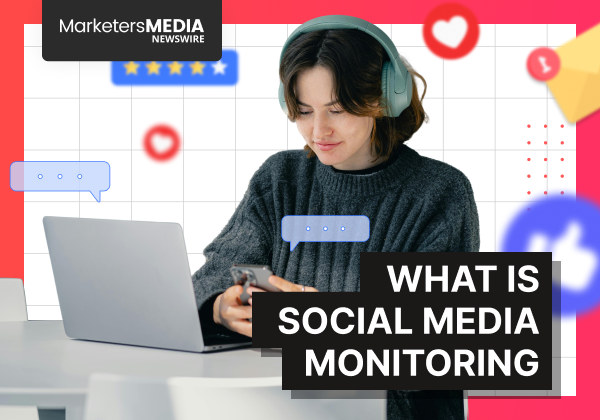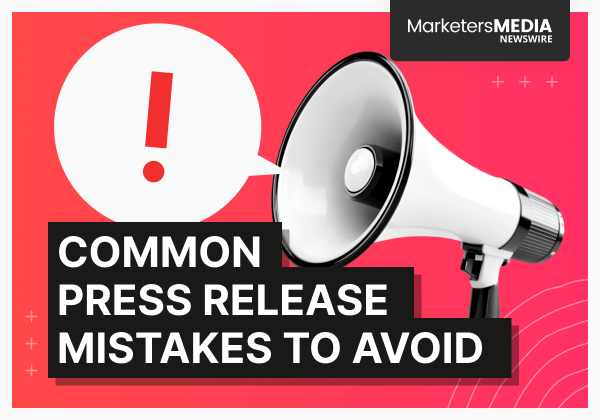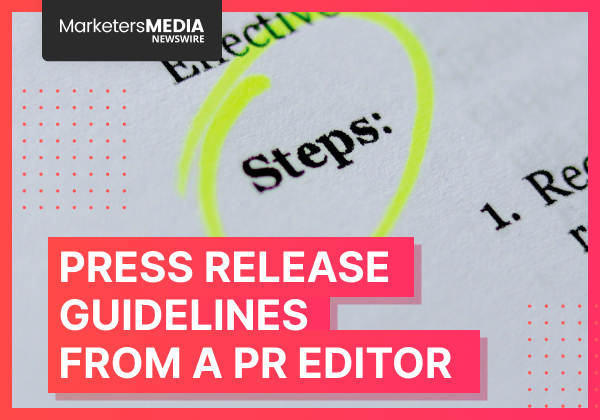A press release is an official statement delivered to news media outlets to announce something newsworthy about your organization.
It’s written in a factual, third-person tone and designed to be picked up by journalists, editors, and media platforms.
A strong release doesn’t promote — it informs. It tells people why your announcement matters beyond your company walls.
What a press release is NOT:
- A marketing brochure disguised as news
- An advertisement with promotional language
- Just another blog post for your website
The moment you treat it like an ad, journalists will ignore it. Worse, you've damaged a relationship that's harder to repair than you'd think.
So, what is the purpose of a press release? It serves seven distinct strategic functions:
Purpose of Issuing a Press Release
#1 Attracting media attention and earned coverage
The primary function is securing pickup by journalists and media outlets.
When reporters use your release as a source for their stories, you gain third-party credibility that paid advertising simply can't buy.
#2 Generating publicity and buzz
A well-timed release creates momentum around your announcement.
It gets people talking, sharing, and discussing your news across multiple channels simultaneously.
#3 Raising brand awareness and identity
Regular press releases keep your company visible in the public eye.
For startups and growing businesses, this formal communication channel professionalizes your image and signals that you're a serious player in your industry.

#4 Sharing official, factual information
Press releases serve as the authoritative source of record for company news.
When questions arise about your announcement, media and stakeholders can reference your official statement rather than relying on speculation or secondhand accounts.
This creates a single source of truth.
#5 Controlling and driving the narrative
A press release lets you decide how your story is told.
You set the context, choose the quotes, and highlight the key facts you want the public to know.
It’s not about spinning — it’s about framing your news accurately before others define it for you.
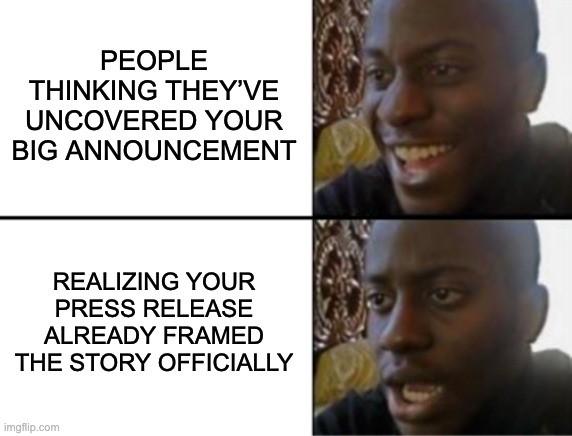
#6 Mitigating crises and negative coverage
During challenging situations, speed matters. Releasing an official statement quickly helps counteract misinformation and demonstrates transparency.
The organizations that weather crises best are those that communicate clearly and promptly. A well-crafted crisis response release can help reestablish trust when it's been shaken.
#7 Building long-term credibility
All these purposes feed into one overarching benefit: establishing your brand as a reliable, professional source of information. Journalists start recognizing your name. Customers see you as transparent. Investors view you as trustworthy.
This credibility compounds over time with each accurate, newsworthy release you issue.
Now that you know why press releases matter, the next question is: when should you actually use one?
When to Issue a Press Release
Not every company update warrants a press release. Here are situations that usually justify a press release:
- New product or service launch – Especially when it introduces innovation or addresses a significant market need
- Event announcements – Conferences, webinars, trade show participation, or community events
- Financial reports – Earnings, funding, or major growth
- Partnerships and collaborations – Strategic alliances, merger and acquisition completions, or joint ventures
- Rebranding initiatives – Changes to your name, identity, or positioning
- Leadership changes – C-suite appointments, board additions, or founder transitions
- Awards and recognition – Industry accolades, certifications, or rankings that demonstrate credibility
- Research findings or studies – Original data or insights that contribute to industry knowledge
- Crisis response – Official statements addressing significant issues or controversies
- Expansion announcements – New locations, market entry, or significant growth milestones
- And many more!
Each of these occasions shares one thing: they're newsworthy to someone beyond your internal team.
💡 Need Inspiration?
Check out these real-world press release examples to see how successful companies structure their announcements.
What Makes a Press Release Successful
A press release isn’t successful just because it’s published.
It’s successful when it captures attention, gets media pickup, and supports your larger goals.
Here’s how to make that happen.
Focus on genuine news value
Before writing anything, ask: Would this interest someone who doesn't work for my company?
Apply the TRUTH framework—is it Topical, Relevant, Unique, Timely, and does it have Human interest?
If you're struggling to articulate why this matters to a broader audience, it might not be press release material yet.
Follow proven writing principles
Write objectively and avoid hyperbolic marketing language.
Keep it simple with short sentences and paragraphs. Lead with your most important information in the first paragraph, following the inverted pyramid structure where the most critical details come first.
Journalists scan quickly. Bury the lead and you've lost them.
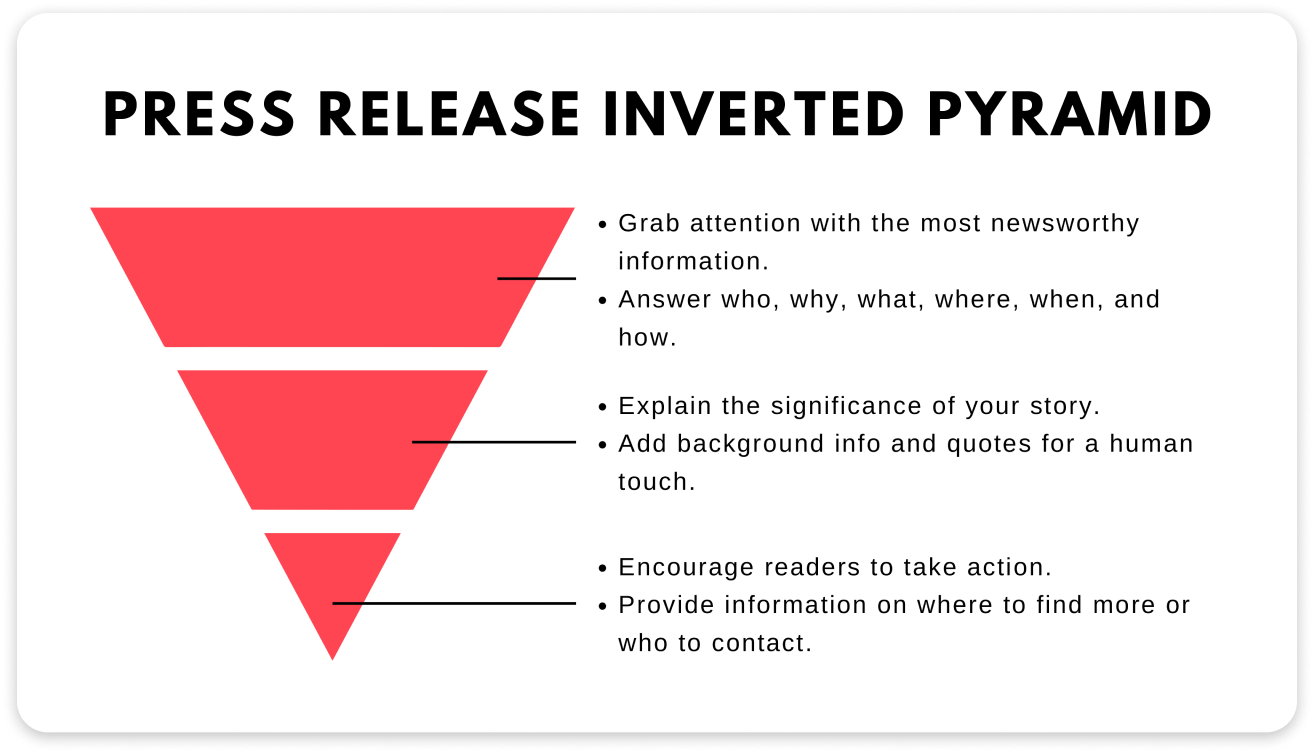
Use multimedia to strengthen your story
Modern press releases benefit from supporting materials: high-resolution images, infographics, video clips, or data visualizations. These elements increase pickup rates and make your story more shareable across digital platforms.
Time your release wisely
Distribution timing matters. Avoid sending releases Friday afternoon, late evening, or on major holidays when newsrooms run skeleton crews. Tuesday through Thursday mornings typically see higher open rates.
Adjust for time zones if you're targeting national or international outlets.
⏰ Timing Is Everything
You can check out the best time to send a press release for a deeper breakdown of ideal days and hours to publish.
Optimize for SEO to extend your reach
Search optimization helps your release travel further.
Add natural keywords in your headline and body, include a link back to your website, and describe visuals with alt text.
A press release that’s both media-friendly and search-friendly keeps driving visibility long after publication.
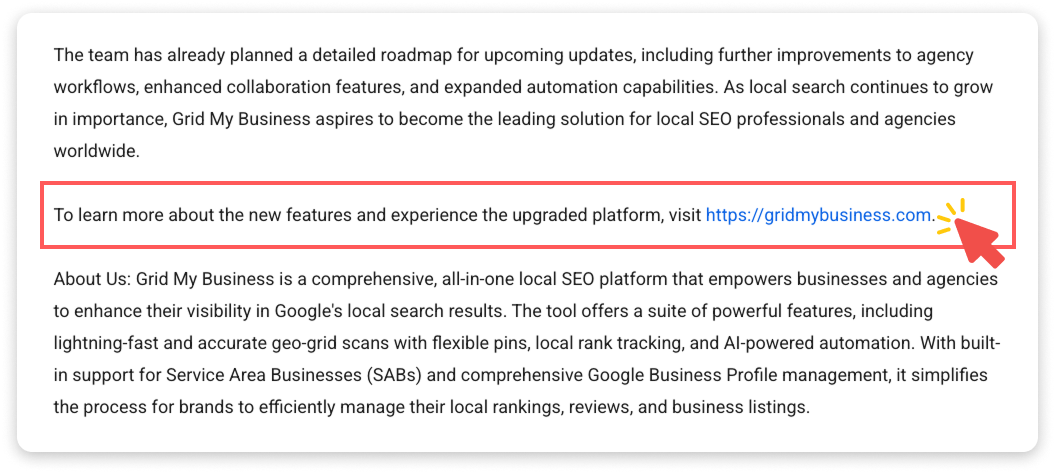
Press Release vs. Other Media Formats
Before you draft your announcement, it helps to understand how press releases fit within the broader landscape of PR communications.
Each format serves a distinct purpose. Choosing the wrong one dilutes your message.
| Communication Type | Purpose & Format |
|---|---|
| Press Release | A detailed, narrative-style document that provides a complete, newsworthy story to the media, equipping them to write an article. Often used for internal occurrences like earnings or product launches. |
| Media Advisory/Alert | A brief, concise notification intended to invite media to an upcoming live event (e.g., press conference, product launch). Follows a "who, what, when, where, why" format and aims to ensure media attendance, not to tell the full story. |
| Press Statement | A short, targeted communication, often reactive, that addresses a specific issue, response, or update. Delivers a concise message from a spokesperson without extensive context, often in response to external events or inquiries. |
| Press Conference | A live, interactive event where an organization addresses the media directly, allowing for real-time questions and answers. Used for significant announcements or crisis communication that require dynamic engagement. |
The key difference?
Press releases tell the complete story. Media alerts invite attendance. Press statements offer quick reactions. Press conferences enable live dialogue.
Choose based on your announcement's complexity, urgency, and need for interaction.
Wrapping It Up
Press releases remain one of the most reliable ways to share authentic news, clarify facts, and build credibility.
They’re not promotional tools; they’re communication assets that shape how others understand your story.
When used consistently and written with purpose, they earn trust that advertising alone can’t buy.
Ready to write your first press release—or refine your approach?
Check out our press release 101 guide, which walks you through structure, formatting, and distribution step by step.
Frequently Asked Questions (FAQ)
Q: Can press releases help with SEO?
A: Yes, but strategically. Press releases improve SEO by generating high-quality backlinks when reputable media outlets pick up your story. They improve brand searchability by helping you rank for your company name and product terms.
They also support reputation management by helping positive, authoritative content outrank negative results. The key is writing newsworthy content that earns genuine media coverage, not mass-distributing for low-quality links.
Q: How does the purpose of a press release compare to a blog post?
A: A press release is a formal, objective tool used to share official company news with journalists, aiming for earned media coverage. Conversely, a blog post is a conversational, relatable format that provides detailed information and supplementary context directly to customers, aiming for SEO ranking and deeper engagement.
Q: Do I need to hire a PR agency to distribute my press release?
A: Not necessarily. You can distribute press releases yourself using wire services. For high-stakes announcements like IPOs or major financial news, premium services and agency support may be worth the investment.
For smaller announcements, budget-friendly wire services combined with direct outreach to relevant journalists can be effective. The key is matching your distribution strategy to your announcement's importance and your available resources.
Q: What is the biggest mistake that causes journalists to ignore a press release?
A: The most critical mistake is presenting the release as a marketing advertisement rather than informative content. Journalists will likely reject copy laden with subjective, promotional language (like "leading provider of innovative solutions") because they seek objective facts, context, and relevance. This can also damage the long-term relationship with the journalist.
Free Press Release Template
Tell us where to send your PDF:
